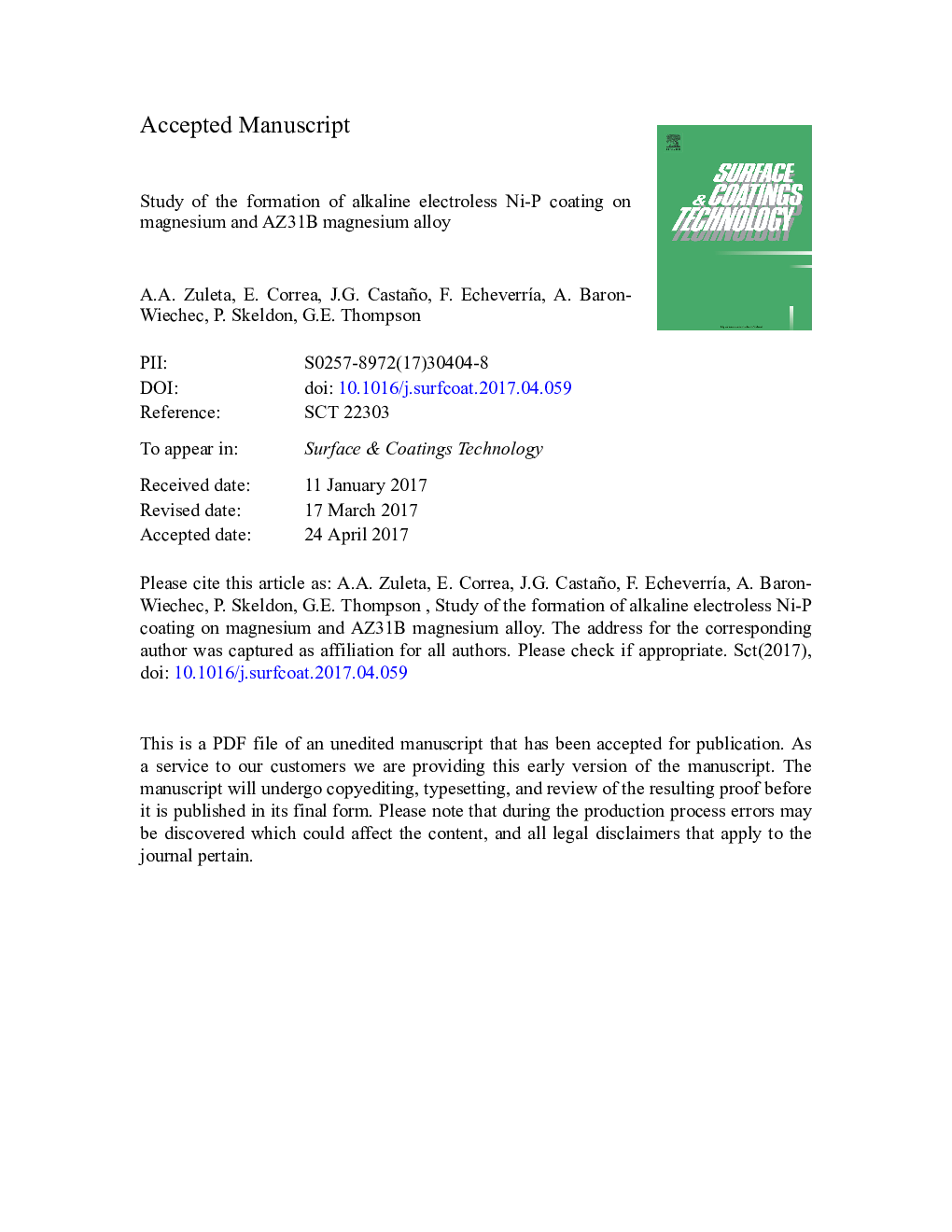| Article ID | Journal | Published Year | Pages | File Type |
|---|---|---|---|---|
| 5464580 | Surface and Coatings Technology | 2017 | 35 Pages |
Abstract
In this work, alkaline electroless Ni-P coatings were directly formed on commercial purity magnesium and AZ31B magnesium alloy substrates using a process that avoided the use of Cr(VI) compounds. The study focused on two aspects of coating formation: (i) the effect of the substrate roughness on the kinetics of the electroless Ni-P deposition process on magnesium; (ii) the morphological and chemical evolution of the coating on both magnesium and the AZ31B alloy. For these purposes, gravimetric measurements, scanning electron microscopy (SEM), X-ray diffraction (XRD), Rutherford backscattering spectrometry (RBS) and open-circuit potential (OCP) measurements were employed. It is shown that a relatively rough substrate promotes the rapid formation of the Ni-P coating on the substrate surface in comparison with smoother substrates. Furthermore, the presence of fluoride ions derived from the NH4HF2 reagent in the electroless Ni-P plating bath leads to formation of MgF2 a few seconds after immersion in the bath. Subsequently, crystals of NaMgF3, with a cubic morphology, are developed, which later become embedded in the Ni-P matrix. The presence of fluorine species passivates the substrate during coating formation and hence restricts the decomposition of the electroless Ni-P plating bath, which can occur due to release of Mg2Â + ions. Finally, according to gravimetric measurements, SEM and XRD, the plating process is initially faster on magnesium than on the alloy.
Related Topics
Physical Sciences and Engineering
Materials Science
Nanotechnology
Authors
A.A. Zuleta, E. Correa, J.G. Castaño, F. EcheverrÃa, A. Baron-WiecheÄ, P. Skeldon, G.E. Thompson,
